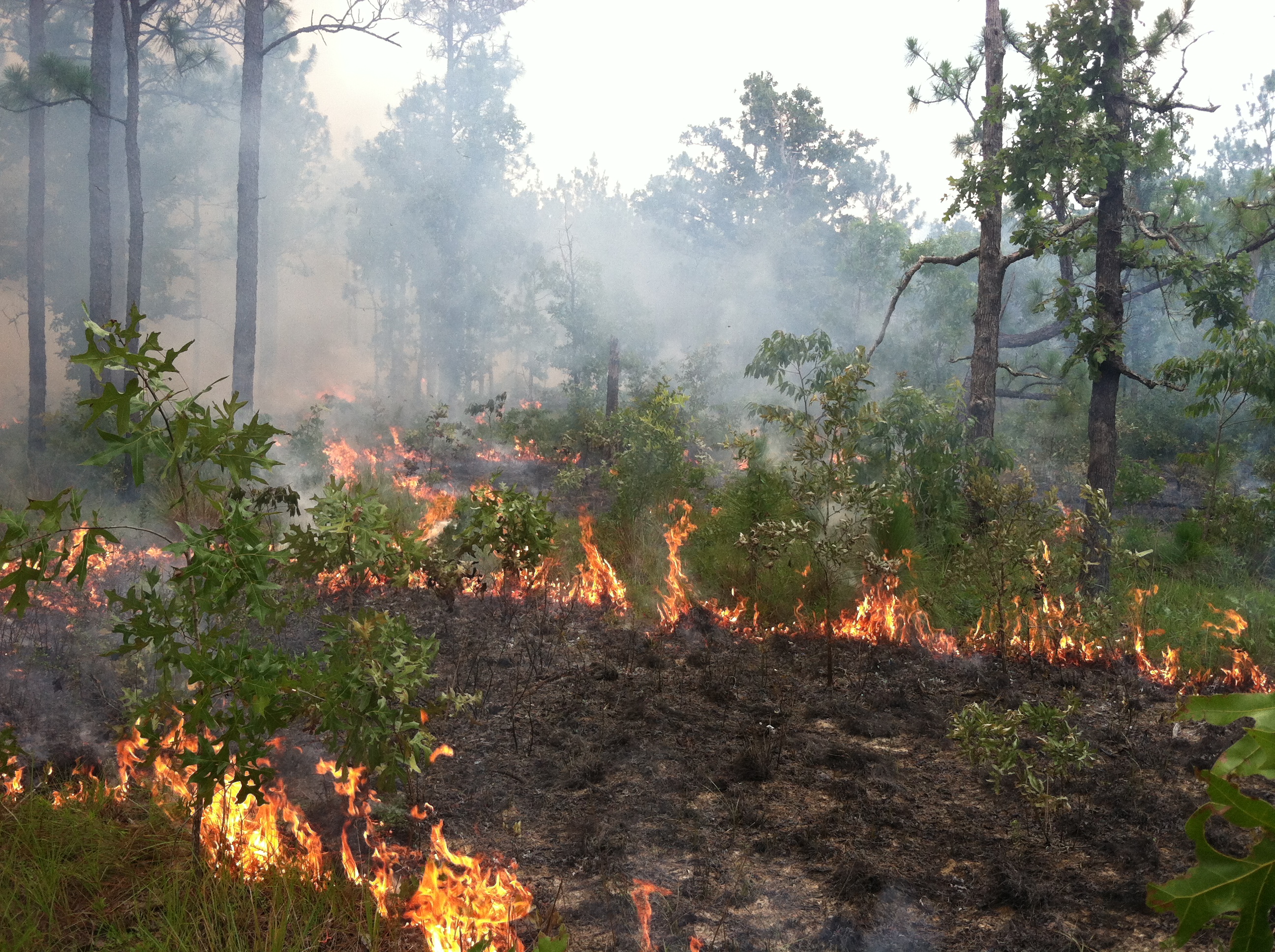Above is a video of a recent prescribed burn in Walton County.
Benefits of Summer Prescribed Burns
Most landowners think of winter months (Dec-Feb) when it comes to control burning the piney woods. But once your pine trees start reaching mature heights (50-70 feet) and have been burned previously to reduce understory, summer burns become an option. Summer burns have the benefit of killing hard to control hardwoods, and shrubs like yaupon and privet. Additionally, wiregrass flowers more abundantly after summer burns for seed production. Recent longleaf/wiregrass restoration projects have increased the demand for wiregrass seed and seedlings that now can be purchased at some tree nurseries across the southeast. Research at the UF/IFAS West Florida Research & Education Center has shown that early summer burns in May and June produce the most wiregrass seed heads and can be harvested in early November for maximum production.

Get Fired Up About Your Pasture or Hayfield
Timely late winter burns (late February, early March) can offer several benefits to a hay or livestock producer. Burning your hayfield or pasture can reduce your insect and disease pressure and kills annual weed seeds and any insect eggs that may be present in the dead grass. Since burning eliminates any thatch layer, sunlight penetration increases and helps warm up soil temperatures quicker in the spring, resulting in earlier green up of your fields. Also the first cutting of hay will be cleaner with old weeds and thatch being removed during burning. Burning also releases nutrients such as ash to your soils. Remember to contact your local state forestry office to get a burn permit and have adequate firelines around your fields. Letting your neighbors know you will be burning is also a good idea to avoid unnecessary calls to your local fire department. If you have to hire a certified burner to burn your fields, it will cost around $10.00 per acre on average.
Additional information on Prescribed Burning:
Use of Fire in Bermudagrass Management
Benefits of Prescribed Burning
Florida Forest Service Fire Weather Website
 0
0

Comments:
May 1, 2016
Two green thumbs up!
April 29, 2016
I Have a one story house with an average peak. I do not want to dwarf the house, so I figured between 15 - 20 feet max. Thanks!
April 29, 2016
Glad you enjoyed it! Thanks.
April 29, 2016
How large do you want the Crape Myrtle to get?
April 28, 2016
I'm confused - another one of your articles about Acoma Crepe states 12 feet - "Crapemyrtle Cultivars for North Florida Garden Design, Ornamental Shrubs, Shrubs June 23, 2015" I'd really like to know the real deal because I want to plant a white crepe, but I think Natchez would be too large - and a 12 foot Acoma would be too small! Thanks
April 28, 2016
GREAT INFORMATION FOR ALL!!! THANK YOU - WILL PASS THIS ALONG TO THE PUBLIC AT THE PANHANDLE BUTTERFLY HOUSE OPENING AND PLANT SALE ON MAY 7, 2016. Jeanne B.
February 12, 2015
I noticed that CRP lands may not be eligible for use as Silvo pasture but do the two programs compliment one another if you are not seeking a cost share with the NRCS or Forestery services.
January 21, 2015
Thanks for finally writing about > Benefits of Prescribed Burning
Comments are closed.